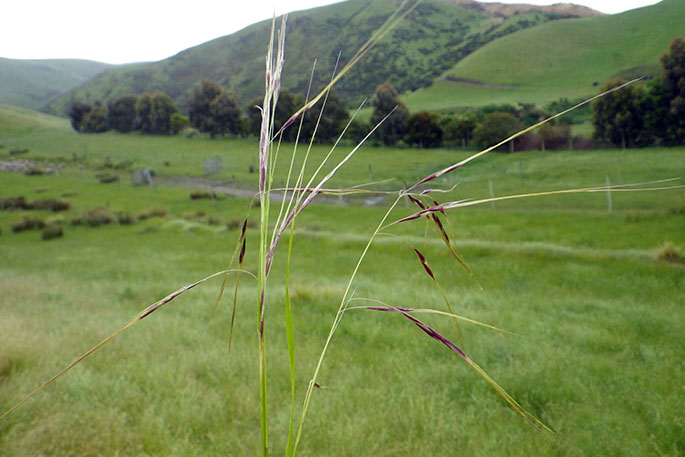The Environmental Protection Authority has approved the release of a rust fungus to control the spread of Chilean needle grass, an invasive weed that not only harms animals, but has the potential to cost farmers millions of dollars in lost production.
Marlborough District Council applied to use a strain of rust fungus, Uromyces pencanus, as a biocontrol agent against Chilean needle grass ( Nassella neesiana) in New Zealand.
"We hope the introduction of this rust fungus will help slow the spread of this aggressive weed and reduce harm to livestock and other farm animals," says Dr Chris Hill, General Manager, Hazardous Substances and New Organisms.
"Testing shows this rust fungus can successfully slow infestations, killing the foliage of the Chilean needle grass as well as reducing its growth and seed production.
"This rust fungus is highly host-specific, meaning it only lives on Chilean needle grass.
"The testing results provided to us showed it is highly unlikely to harm native plants or animals. There is also no risk to people."
Chilean needle grass is a perennial grass from South America and was first identified in New Zealand in the 1920s.
The seeds have sharp tips that can bore into the eyelids and pelts of animals, resulting in severe animal welfare issues, including blindness.
Plants form dense clumps, which exclude pasture species and are less palatable to stock, reducing farm productivity.
Methods for managing Chilean needle grass infestations on farms, such as destocking for the three-month period when seeds are present, or by applying herbicide, can be both difficult and expensive.
One study estimates that across the sector, the potential cost of lost production could reach as much as $1.16 billion, if the weed is left unchecked.
Chilean needle grass is well established in some regions, particularly Hawke’s Bay, Marlborough, Auckland and Canterbury
"Our panel of independent experts approved this release following a rigorous, evidence-based investigative process which included the consideration of public submissions, international best practice and engagement with mana whenua."
In recent years the EPA has approved other biocontrol agents for weeds such as old man’s beard, Sydney golden wattle and moth plant, amongst others.
Find out more:
Learn more about biocontrol agents.



0 comments
Leave a Comment
You must be logged in to make a comment.